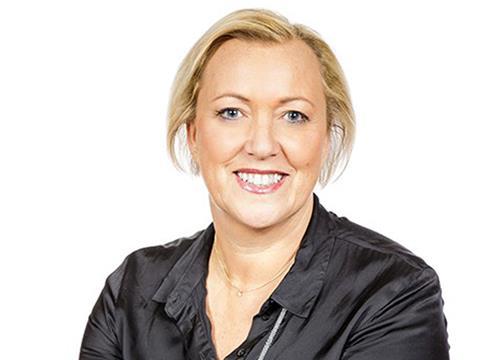
Pascale Wautelet, VP Global Research & Development at Avery Dennison, explains how physical and digital technologies can be combined to drive circularity in the packaging supply chain, what is required to advance these innovations, and how to connect production, usage and recycling.
We often look at sustainability through the lens of 2030 goals and our 2050 aim to achieve carbon neutrality. These are key milestones, but what do they actually translate to in real environmental terms?
Based on the Paris Climate Agreement, we have to keep the global temperature rise below 1.5 degrees celsius. This is the level at which life, as we know it on our planet, is sustainable. And we have less than a decade to achieve it.
It sounds alarmist, but it’s the reality we face. It’s why we as an industry have to do things differently. We have to be much bolder and far quicker. It’s time now to really accelerate our progress; we have the technology now to measure, track, transform and scale our sustainability initiatives, but still, we face a barrier of a lack of connectivity and collaboration between different sectors.
The circular economy relies on these sectors learning and progressing together. Looking at the packaging industry: 40% of global plastic waste is from packaging, while just 14% of global plastic packaging is recycled.
This gap in recycling is partly because the ecosystem is extremely complex and the recycling industry is fragmented. Eliminating plastic has also proven to be difficult on a wide scale, partly because the industry has had difficulty in finding cost-effective and functional alternatives. In the past, innovation took place within a single industry, while the opportunities today frequently come from cross-industry collaborations.
These two issues show us a few things; first, we need real investment in R&D and innovation to develop alternate materials. Secondly, recycling does not equate to circularity, and this is why we need to look at upstream solutions like Ecodesign that help us avoid the need for recycling in the first place. But in the here and now, we also still need to work towards industry-wide consensus and regional consistency for recycling. We need consistent guidelines and a streamlined infrastructure that facilitates the recycling process for the most innovative sustainable materials.
When I spoke at The Economist Global Sustainability Week in London, I discussed how it is clear that we are seeing a transformational shift that’s being driven by megatrends: not only sustainability, but also the rise of e-commerce, premiumization, and an increased focus on cost-efficiency and performance. So, we need to address these needs from multiple angles, with both physical and digital solutions. Like many industries, packaging has been slow to adapt to digitalization but we see now a tremendous acceleration and an equally tremendous opportunity. For us, the goal is to find the right marriage between the physical and digital worlds, and invest in both.
For example, we have solutions like CleanFlake: this is a physical technology that uses specialised adhesives that ensure that labels don’t become a barrier or a bottleneck to the recycling process. As I mentioned before, we are also heavily investing internally in developing alternate materials, and even looking outside of our four walls by partnering with startups in the labels and packaging space through our accelerator program AD Stretch.
Our focus on the physical is to build waste reduction, responsibly sourced materials, recycled content, and compostable capabilities into the design process. We want to develop materials that enable recycling at every level.
The next innovation revolution lies in intelligent packaging. We are already combining our material solutions with the digital, via intelligent label technology. We can now create labels that enable traceability along the entire supply chain, answering questions such as what is the origin of the product? Is it ethically sourced? Where and how was it created? where it was shipped? What’s the expiry date? Were cold chain temperatures adhered to? How can we enhance product distribution?
This, in turn, unlocks a new level of transparency that can continually inform us as innovators, as brands, and as consumers at the end of the chain.
Where this is really revolutionary is in the food industry. Through digital identifiers, we can improve inventory management, traceability, and storage monitoring to prevent over-production, reduce waste and prevent spoilage—reducing the carbon footprint of any product from cradle to grave.
While we continue to innovate and improve through both materials and tech, what is evident is that we’re at sustainability’s tipping point. Regardless of external forces, we have to remain committed to achieving our targets. Times of crises expose those areas in which sustainability is just an add-on. When it’s easy to abandon, there was no real commitment to begin with. We see sustainability as being central to our business strategy; the more sustainable the supply chain is, the more robust we will be for future crises.
And we also see how a crisis can create opportunity. For example, shortages of traditional materials can create pressure that opens the door to the use of alternative—and more sustainable—materials.
In a way, these unpredictable external factors expose the fragility of the old system and demonstrate quite clearly why we can’t stop innovating. It is a catalyst to commit to new processes and practices now.











No comments yet